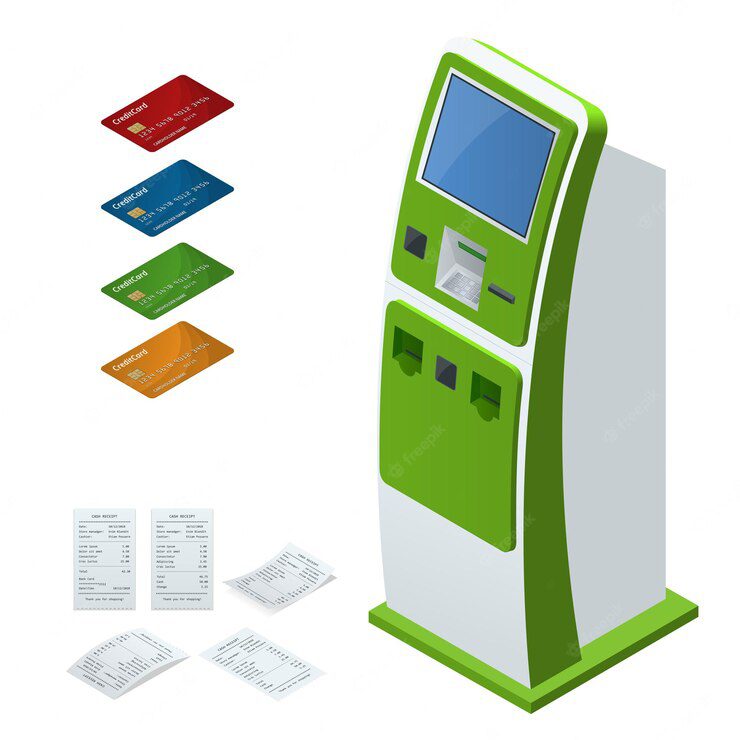Industries’ interest in kiosks as an asset for driving customer value through positive engagement is on an upward growth trajectory. Kiosks are no more used just for low-value transactional marketing processes for customers, much less being a novelty. These have established their role in customer-centric communications. Coalesced with new customized software and dynamic display technologies, solution providers in the interactive kiosks market are racing ahead to meet spiralling expectations of their customers. Recent innovations such as in IoT and 5G are massively shaping the contours of demand for interactive kiosks among retailers and merchants.
What Retailers and Store Managers Have in Store for Customer Engagement?
Merchants of different stripes have grown their spending on interactive kiosks installations. The numbers have risen by a huge quantum over the past few years, and are expected to nearly double by 2027.
Self-ordering Kiosks Reinventing Immersive Customer Experience
Businesses in the retail industry have often been on their toes to offer their customers an immersive experience. More than ever, quick service restaurants, retailers, and customer-facing executives have found interactive kiosks cost effective way to improve customer satisfaction, reduce churn out in their own teams, and remain agile to the changing communication needs for their consumers.
Over the years, very many applications of this dynamic digital technologies have enriched the revenue potential for stakeholders in the interactive kiosks market. Per an in-depth study, the global market valuation is projected to climb to US$ 43,697 Mn by 2027.
A number of smart installations in interactive kiosks market have advanced the objectives of strengthening sales prospects. Not just on operational and tactical levels, solution providers—hardware and software developers—are leaning on exploring new value propositions for adopters in advancing their brand equity, particularly brand awareness and trust. Smart interactive kiosks are doubling as enabler for brand touchpoints.
Businesses in the healthcare, entertainment, education, food & beverages, and travel and tourism industries have embraced the advantages of interactive kiosks toward driving some sort of customer value. Perhaps by the far the most popular interaction examples are deployment of interactive kiosks at airports and healthcare facilities. With these planning to spend big on interactive kiosk programs, there is a lot of latent opportunities.
Service organizations are stridently demanding more functionalities, nudging software providers to stretch their imagination with what kiosks can accomplish. In recent times, when contactless systems became an unavoidable requirement for customers in the hospitality industry. Of note, kiosk technology gathered steam for contact-less pickup and transactions.
Get a glimpse of the in-depth analysis through our Report Brochure
Why Do Retailers Consider Self-service Kiosks Great Asset?
Self-service kiosks opened up a new paradigm for automated commerce in the retail industry. New opportunities have emanated in upselling, where real-time communication functionalities of interactive kiosks have made a significant difference. Self-ordering technologies are being used in the restaurant industry more than ever before. They have been helpful in addressing two major customer pain points: long wait times and difficulty in finding preferred items. Indeed, in high congestion zones, restaurant owners have found daily foot traffic using interactive kiosks for ordering processes.
The COVID-19 pandemic offers a huge tailwind for adoption of smart self-ordering kiosks across quick-service restaurant chains (QSRs). With the need for keeping human contact low at least for some time to come, touchless kiosks will open up exciting prospects in the interactive kiosks market. The ‘grab-and-go’ retail trend has enriched promising avenues in the interactive kiosks market.
In spite of these having a lot of takers, the lack of prominent brands in the marketspace has somewhat dampened retail and QSR installations. Grubbrr, a start-up, has partnered with Samsung in launching self-ordering smart kiosks for the industry.
The payback has been great for quick-service restaurant chains and major retailers in numerous countries leveraging kiosk technology for making customer experience more meaningful, measurable, and consistent. Thus, stridently, self-service kiosks are becoming an effective asset to cement new customer experiences.
For List of Key Players and Full Segmentation, Ask for a Sample Report.
Brands Look With Immense Optimism in Integration of Digital Kiosks: Benefits and Considerations?
Customer preferences for digital kiosks are likely to spur the need for new business models.
The past few years have witnessed marketers showing enormous interest in self-service kiosks for understanding their role in driving customer engagement through brand touchpoints.
Making Shopping More Personalized–Are Customers Ready?
Easier and quick transactions with self-service kiosks are not the only attributes that have hooked customers. Personalization is perhaps a more attracting customer proposition that is expanding the room for new demand in the interactive kiosks market. A case in point is adoption of interactive kioks by QSRs for customers wanting made-to-order food products.
The expanding IoT has further enabled adopters to chart positive customer journey. Interactive kiosks are expected to broaden horizon for digital out-of-home (DOOH) advertising. With the costs of content delivery declining, interactive kiosks will be used by brands for creating new clever touchpoints.





























